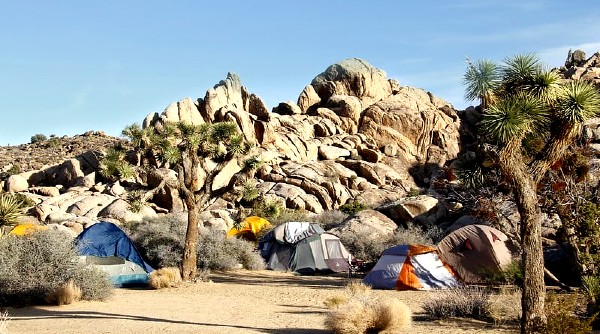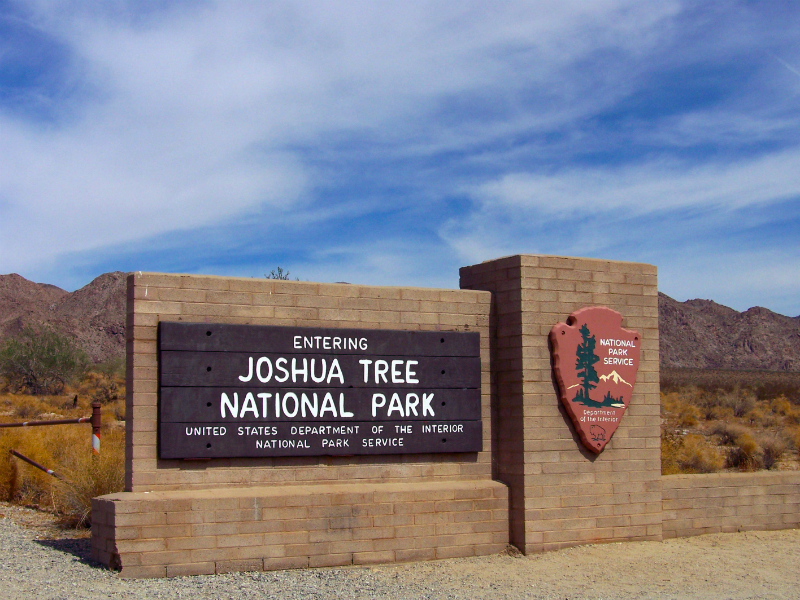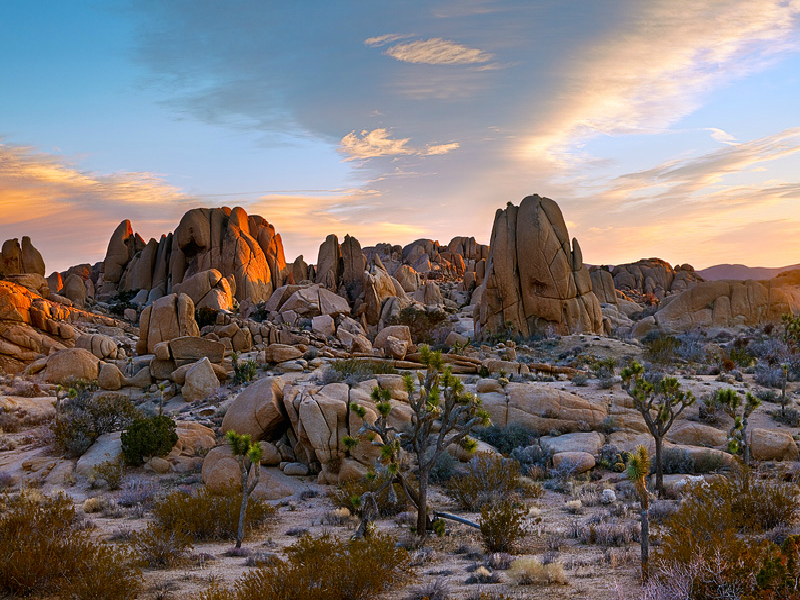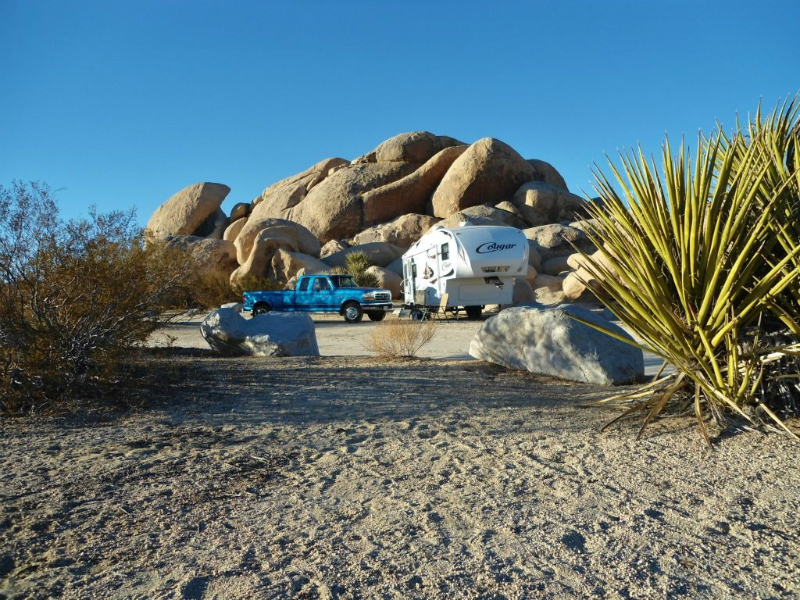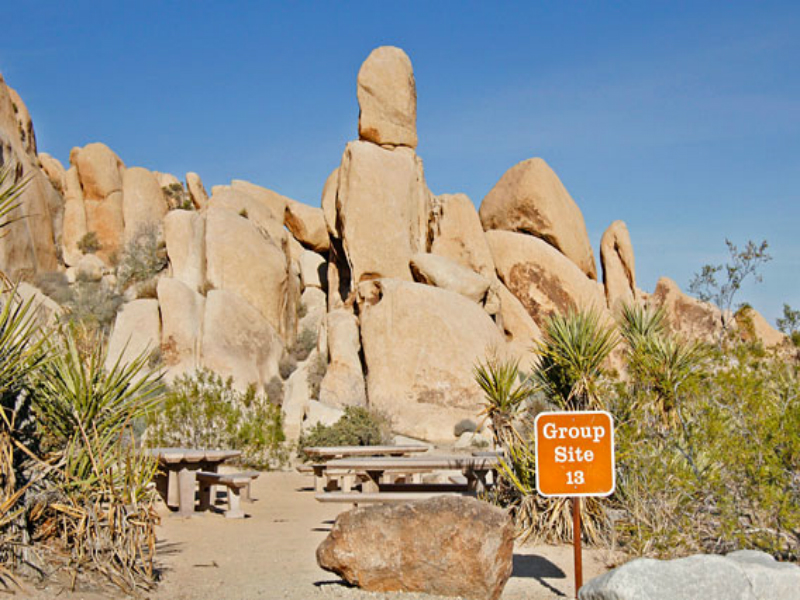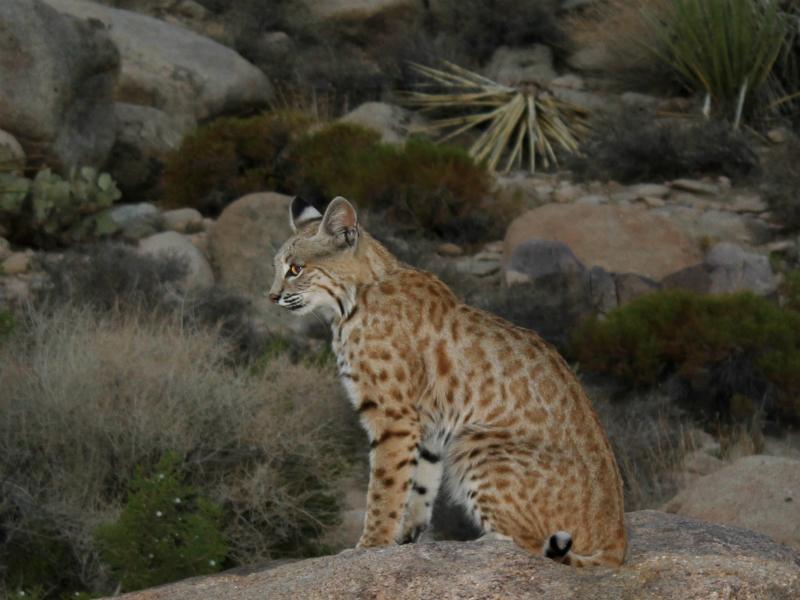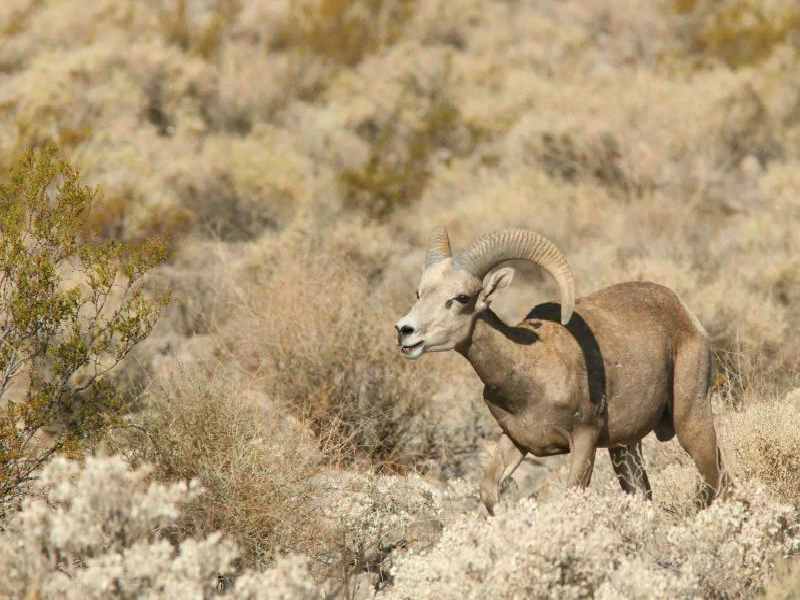Sleep under the stars and enjoy some of the darkest night skies in Southern California. With 9 different campgrounds offering about 500 developed campsites, Joshua Tree National Park offers options for individual travelers, families, and large groups.
At Joshua Tree, there’s camping to fit any style. Looking for family-friendly car camping? Find a site near boulders perfect for kid-clambering. Feeling adventurous? Pack in, on horseback or on foot, to set up camp almost anywhere in the park’s 800,000 acres/323,749 hectares (a few restrictions apply).
The park has nine established campgrounds, six with first-come, first-serve sites. But please keep in mind that some campgrounds close during the summer months, and springtime weekends can be crowded, especially when wildflowers bloom. Holiday weeks are also very busy. To improve your chances of getting a campsite, come to Joshua Tree during the week instead of on a weekend.
To claim a place at a first-come, first-serve campground, find a vacant site. Complete a fee envelope and use it to deposit your cash or check payment in the collection box near the campground entrance. Retain the tear-off receipt from the envelope and clip it to your numbered site post. Pay only for the nights you plan to camp: refunds are not available.
Jumbo Rocks Campground is popular; its 124 sites are scattered throughout a maze of granite boulders, and there are ranger-led talks on weekend evenings. The camp is especially popular with astronomy groups and 4WD fans. Black Rock Campground on the park’s west side is popular with families and groups thanks to running water, flush toilets, and slightly cooler temperatures. Cottonwood Campground, near the park’s southern entrance, also has drinking water and flush toilets.
Reservations are available for Black Rock and Indian Cove campgrounds during the busy season from October through May. Book a site online at www.recreation.gov or by calling 877-444-6777 up to six months in advance of your visit.
There is potable water available in or near the campground at Black Rock, Cottonwood, and Indian Cove. (Indian Cove has no water in the campground itself, but there is water available at the Indian Cove Ranger Station. There is no RV water access at Indian Cove.) Operating in ‘better to be safe than sorry‘ mode, it’s wise to plan ahead and bring at least two gallons of water per person, per day for your trip to Joshua Tree.
Speaking of being prepared, it might also be wise to read up on the wildlife that inhabits this national park considering the likelihood of encountering something. Knowing what to do, or not to do, could prove to be valuable information when taking into account that mountain lions, coyotes, bobcats, bighorn sheep, mule deer, scorpions, and a multitude of rodents and reptiles, including 18 varieties of lizards and 25 varieties of snakes, all dwell in this desert setting. While sightings of any of these creatures (most of which are harmless) make for amazing photographs and stories to take home to family and friends, certainly an experience with a mountain lion or rattlesnake could be quite dangerous. So make sure you have plans for where to store your food, and what to do to stay safe.


